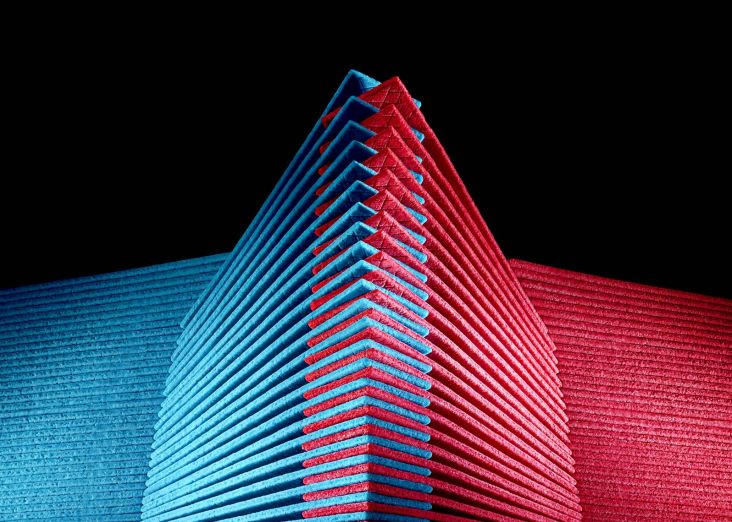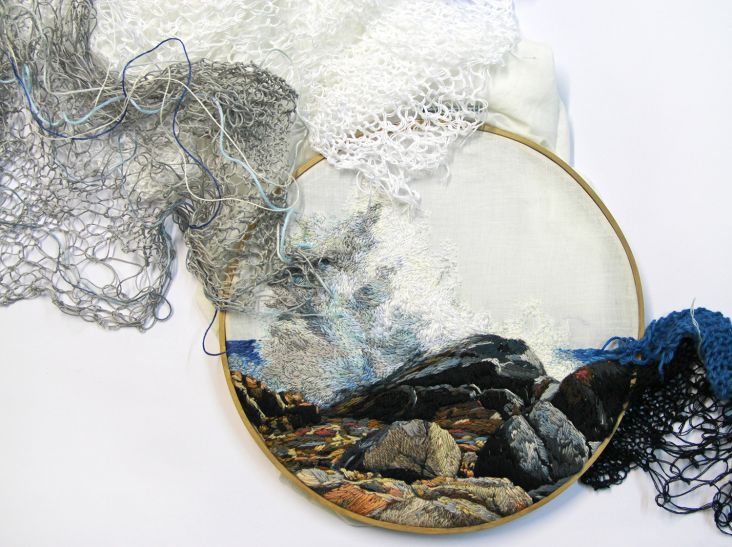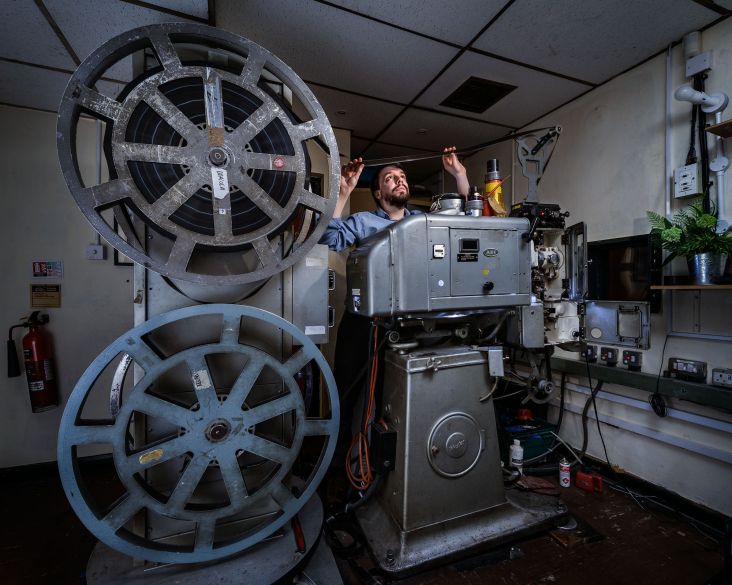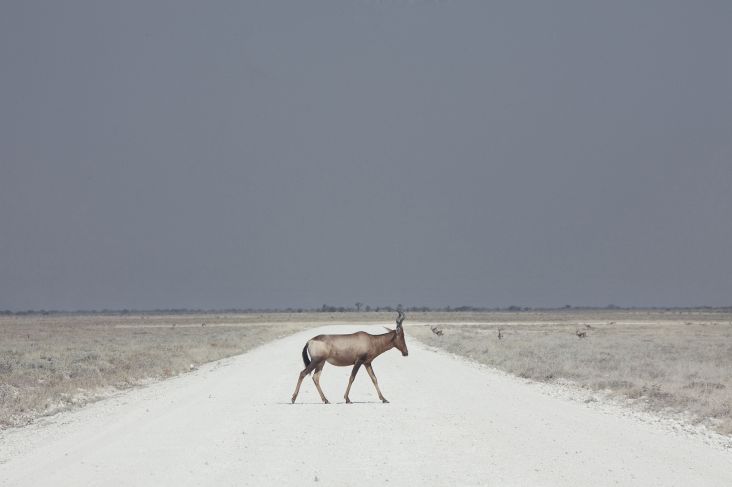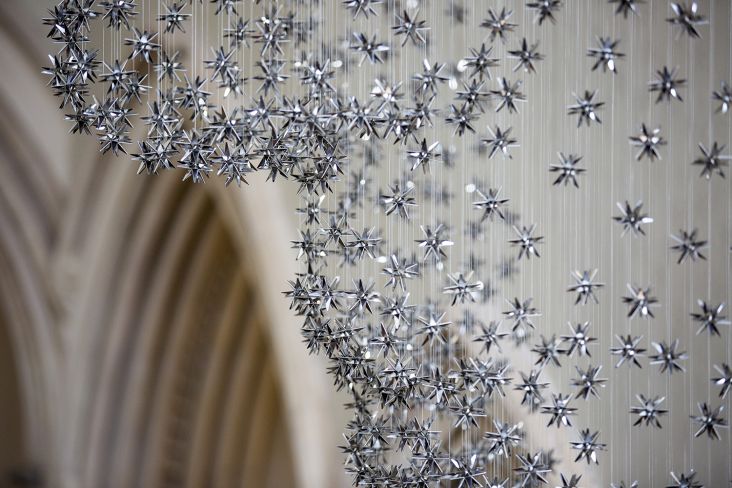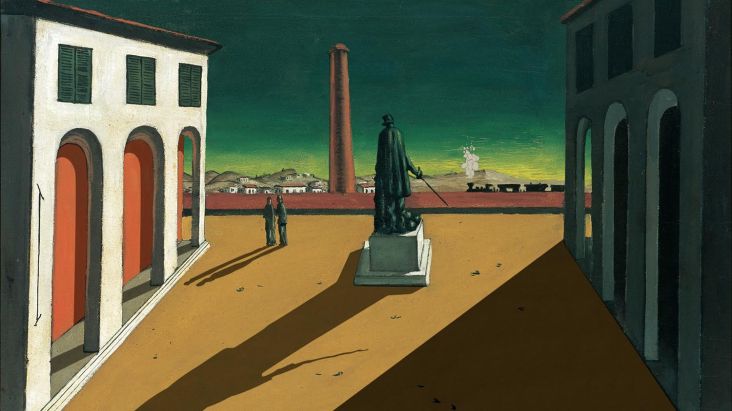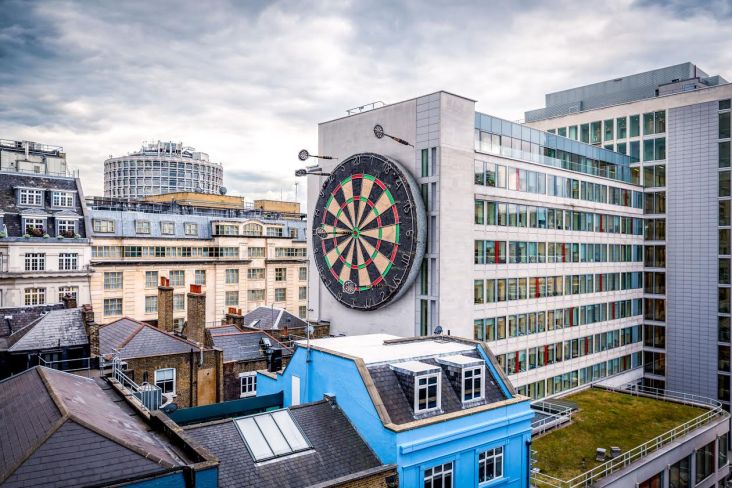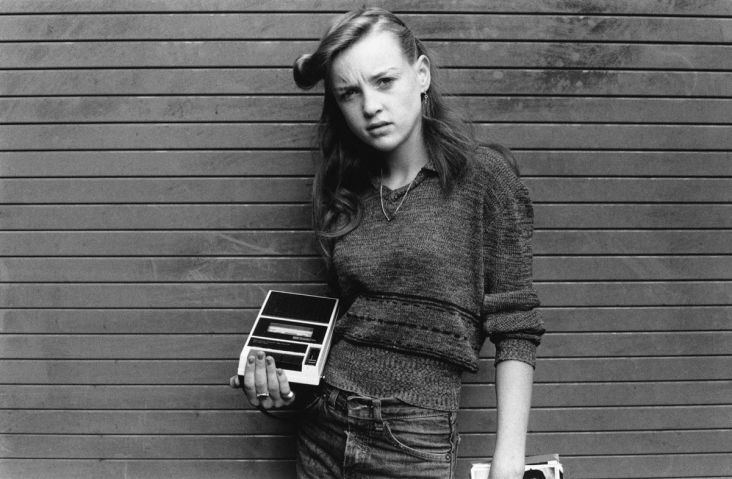Paul Wyatt on the secrets of great filmmaking, how to tell a story and why silence is golden
Paul Wyatt is a talented London-based filmmaker who loves to delight audiences, empower people to action and enlighten a new way of thinking. His films sell products, educate, inform and entertain. During his illustrious career, he has worked with The RSA, D&AD, Universal Music, Studio Canal, University of the Arts London, The Royal Society of Literature and many others.
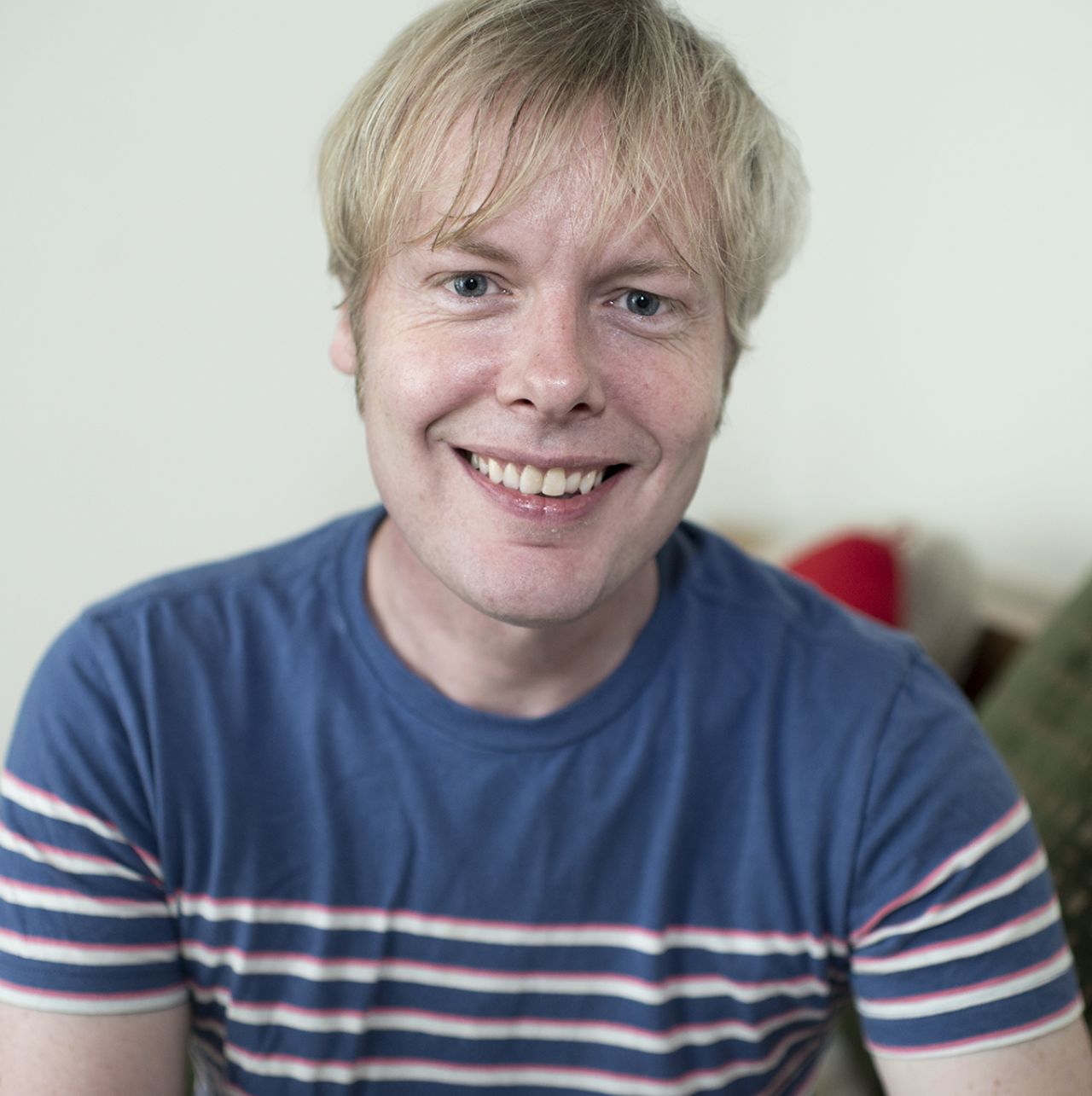
In recognition of his work in highlighting the issues around design and sustainability through the medium of film Paul was invited to join the fellowship at The Royal Society of Arts in 2016. And his work has been featured in The New York Times and Forbes, and has been exhibited at London’s Design Museum.
Paul’s background is in advertising where he worked as Art Director for Schroders, Virgin Media and Playstation. One of the strengths of his filmmaking is being able to remove complexity from difficult messaging and communicate clearly and effectively to a general audience – a skill he developed during his advertising days.
We caught up with Paul to find out more about his background, what makes him tick and what it takes to become a great filmmaker...
Tell us more about your career. How did you get started? And how did you get to where you are now?
I started out as a designer and when you do this you’re supposed to go straight into a razor sharp agency and do work which changes the world and wins D&AD pencils. Well I didn’t. I worked client-side in the Dot-com era at Lycos, churning out campaign materials, banners, copy, web pages, more banners, newsletters, the occasional video, Flash animations, and many more banners. I absolutely loved it.
Client-side, designers get a rough deal as they’re continually told that working in an agency is the be-all-and-end-all of a creative career. But client-side working gave me a fantastic insight into how a business and brand operates and where your creativity fits. The revenue team sat alongside us, as did the accountants, MD, web dev and marketing teams and because of this you got to see how your work impacts each of them.
I ran a small team which had to work with the marketing and revenue teams to bring in enough cash to keep us all in jobs – so there was a fair bit of a pressure, but I was in good creative company.
Working alongside me was Luke Prowse (who’d go on to work with Neville Brody redesigning The Times and most recently on the Channel 4 rebrand), Tom Baker (who worked on animation projects for Mitchell & Webb and is now Art Director on the new animated series of Mr Bean) and Tom Harding (who is now Design Director at Made by Many). Fantastically talented people, which was just as well, as you were completely accountable for what you did so if a piece of creative wasn’t getting enough clicks the MD and client would turn up at your desk and you’d need to fix, rethink and recreate it. I loved that immediacy with the audience and the client because it taught you how to make fast and informed creative decisions. I’d recommend any design graduate to start their career client-side.
Later I freelanced and worked with agencies such as Big Active and on a few projects with Neville Brody’s Research Studios in Paris. But when I got to work for the ultra large London agencies I missed the immediacy with the users or the audience. You never got to meet the client and all the feedback was often filtered down via six different account managers. I became bored.
I’d always enjoyed the TV, commercials and film aspect of working in the creative industries – so I went out and bought myself a camera and thought I’d make some films.
So was that the moment when you decided to become a filmmaker?
Yes. I’d saved up a couple of months worth of pay to keep me going with this 'making films' idea. I bought a Canon 7D, a tripod, some lights, a few lenses... oh, and a jib crane which is now seldom used but lives behind my sofa.
I started writing and sending out proposals for films with one of these being 'Studio Life' which ended up being sponsored by Adobe and distributed via Computer Arts magazine. Studio Life was a series of 10 films featuring the best advertising and creative agencies in the UK. It featured people like Landor London, The Partners, Ustwo and Why Not Associates.
I was nervous making Studio Life as it had to be good for me to be able to go on and do other stuff. It seems silly now but it was quite high stakes and I was a bit of a stress monkey doing it. They gave me a lot of freedom though, and I did enjoy asking creative directors slightly awkward questions about clients, designers and how their businesses ran. I’m pleased to say it did very well. That was five years ago, and now the digital landscape has changed so much I’d love to go back and do recaps and see how some of these agencies have had to change.
What's been your proudest project or projects to date? Tell us more
In 2012 I was asked by Nat Hunter to be filmmaker on the Royal Society of Arts “Great Recovery” project. The Great Recovery is all about connecting people and especially designers back with the materials all around them. It encourages designers to rethink how products are made and the materials which are used so that products can have a longer life and be re-used rather than thrown away or re-processed.I had no clue about this subject matter and it was a bit of a baptism of fire for me to get my ahead around its complexities to be able to explain it to Great Recovery viewers.
Almost on my first day, I was sent running down a disused tin mine in Cornwall with a camera which was such a shock to the system after having just completed the more sedate Studio LIfe. Three years on and 40 films later I could be found nonchalantly mooching around a giant incinerator camera in hand wearing high viz and hardhat. The films were made as if they were little TV shows. The rationale behind this was that by using a format people were already familiar with it would help attract a general audience to the topics being discussed and amplify the projects messaging. I didn’t want this to be niche viewing.
In 2015 I filmed and directed an independent film inspired by this project called The Survivor Sofa Story, which followed the story of three designers who were asked to develop design initiatives which could help reduce the 1.8 million tonnes of items that are thrown into landfill each year. It featured people like Sebastian Conran, Ella Doran, Xenia Moseley and many others.
It was a pioneering and eye-opening film and project which resulted in a new recycled fabric being created called 'Survivor'. The film was shown on TV, distributed via iPlayer and selected by Crafts Council for their Real To Reel film festival in May 2016. I’m quite proud of that and happy to say that because of its success we’re currently developing a new film about sustainable fashion.
You have an innate ability to turn a complex or difficult message into a simple one... how do you accomplish that?
I ask lots of questions. 'I don’t understand' or 'can you show me that again?'. These are great questions to ask in meetings with clients or when I’m interviewing someone because if it’s not as clear as mud to me then how can I explain it to anyone else? A really good question is 'why should I care about this?' or 'why would I want to watch this?', which usually fires people up and you then get to see their passion for the project, product or cause and why they want to shout about it to the wider world. You end up sharing that passion. I ask so many questions I must drive people mad but it works.
There was a point last year when I was making six films at once over a three month period. Keeping that amount of narrative and messaging in my head fried my brain a little. I kept this little notebook with the core objectives of each film written in it, which I'd read before turning on the camera.
So what's the secret to making a successful film?
Keeping it relatable and clear is key to audience engagement. If it’s a documentary piece it needs to be immediately obvious what issues I'm trying to tackle. Then it needs to poke around at these ideas and result in some sort of resolution at the end. It’s a very basic narrative thread but one which can involve multiple elements that all combine to tell a story. I’m continually asking myself 'how does this fit into the narrative?' and 'does this make sense?'. Muddy storytelling is the kiss of death in anything observational.
If it’s a product or service promo then it’s a good idea to include shared moments in the film which your audience can relate to. You know the ones where you’re watching something and think 'oh yeah, that’s like something I’d do' or it strikes a chord in your own experience somewhere. Show and tell your audience why products matter and why they should care about them and they’ll buy into them.
A good example of that is 'The Story of Picle', which is a short film created for innovation agency Made by Many. It was a home-grown app dreamt up by designer Alex Harding which let you take a picture and record a sound at the same time – essentially pickling your experience. Alex came up with the idea for the app in the seaside town of Broadstairs in Kent. So we took him back to the source of his inspiration and retraced his steps. This little film, with it’s very human story, was launched in time for Pickle's arrival at South By Southwest where it started with 30 users and left a few days later with 30,000...
This film wouldn’t have worked if we’d done the standard 'here we are in our studio, look at this cool thing we’ve made, we’re totally amazing and all that'. With Made by Many, they’re so open to looking at new approaches.
Yes, it’s a product made from the internet but it was created by a human with a bunch of other humans helping. So by coming at the film from a very relatable angle, it’s going to build trust and support for the product from viewers because (we hope) they're human too.
"Muddy storytelling is the kiss of death in anything observational."
Any funny or unusual moments you can share?
I find it unusual and funny that after doing this for so long I’m still asked to make commercial projects for free. Recently I was asked to drive around Cornwall in a van for 10 days filming a guy interviewing people he works with... you know... for free. It was pitched to me as something which would be 'fun' and 'good for my portfolio' and 'great content'. It wasn’t a charity or anything like that. He got very put out when I said no and that he’d 'do it on his iPhone' instead.
This is not unusual. There’s this odd idea that one creative is the same as any other and they can pay for life through 'exposure'. If you’re working on a project for someone which makes them money, you are entitled to be paid for the work you do.
You've got quite the solid reputation in the creative industries – apart from producing great work, what else has helped to get your profile out there?
I teach now and then and have started planning a documentary-making masterclass. For many years I was a regular in Net magazine and Computer Arts and produced and presented Web Design TV for Future Publishing for a few years. I don’t get asked to do so much of this now as people always presume I’m always too busy!
"If you’re working on a project for someone which makes them money, you are entitled to be paid for the work you do."
You also create promotional trailers for Theatre?
I love making theatre promos, as it takes me back to my advertising roots. Quite frankly, they’re short but powerful, which look nice and work hard to get bums on seats for the performances.
The trailers themselves aren’t scenes from plays as I’m not convinced that's the best way to appeal to an audience because you’re dropping in cold on a play with no context. Instead they’re specially shot and quite visceral productions, which give the viewer a sense of the play's vibe. My favourites are Richard III, Our World at War and Elephant Man.
Tell us about your current kit and setup.
I own most of my equipment, and because of that I take ages to decide on what to buy. Camera equipment is expensive so I really think through how important a piece of kit is for a project and how that project will benefit from it – before parting with any cash.
Storytelling is not all about the equipment you use. Just because a film is made in ultra HD doesn’t mean it’s going to be more interesting if the subject matter and narrative are a bit rubbish. When I teach film, all the students are itching to use a 4k Sony F5 or something like that but I start them off on Canon XA20s which are these tiny cameras but perfect for learning composition, exposure and narrative with.
What software and tools do you love to use?
I use all the usual suspects like Premiere Pro, After Effects, Audition and Da Vinci Resolve. I was up at Pinewood Studios not so long ago and got to see all these 35mm film Moviola editing desks. I would love to have a go on one of those, but it would probably drive me mad after a while. Working with film really appeals to me.
Would you say you're creatively satisfied?
If I was creatively satisfied I don’t think I’d make another film. Nope, I always think I come up with better ideas for films and how they’re made. I’d really like to reinvent the wedding video... no one ever takes me seriously when I say that but could you imagine filming a wedding as an observational documentary piece? All those characters and little moments and interactions. Making it beautiful but very real.
What three tips would you offer to filmmakers just starting out?
It’s all in the eyes Don’t be afraid of close ups. A wide angle shot of someone using an app or engaging with a product is fine but then show me how they’re reacting to it with a close up of their face, hands and eyes. Detail shots like this will make a viewer feel more connected and engaged with your film. Filming everything in wide angle keeps your audience at a distance – bring them close and into the action.
Silence is golden. It really is. Gaps left between dialogue in a short film – even if it’s just for a second or two – will help your audience comprehend what’s going on. It really is a pause for thought. Constant rat-a-tat dialogue can be overwhelming and become a bombardment on the senses. If you were constantly barked at by someone in real life you’d end up tuning them out and it’s the same with a film voiceover that never quits.
Show don’t tell. If you’re filming someone and they decide to talk about their cat either cut the cat comment out or go and film the cat and use it as B roll.
What kind of legacy do you hope to leave?
If I leave behind a pile of films which have entertained, informed and perhaps changed a few perceptions or enlightened a new way of thinking – I’ll be very happy.
To find out more about Paul, visit paulwyatt.co.uk. Or you can follow him on Twitter @pauljwyatt. To see more of his great films, check him out on Vimeo.




 by Tüpokompanii](https://www.creativeboom.com/upload/articles/58/58684538770fb5b428dc1882f7a732f153500153_732.jpg)


 using <a href="https://www.ohnotype.co/fonts/obviously" target="_blank">Obviously</a> by Oh No Type Co., Art Director, Brand & Creative—Spotify](https://www.creativeboom.com/upload/articles/6e/6ed31eddc26fa563f213fc76d6993dab9231ffe4_732.jpg)








